Born in 1853 in the Netherlands and dying 37 years later at an age that could be described as almost Christ-like, Vincent Van Gogh, although a 19th century painter, sent a messianic message to the art world that has influenced the 20th century to this day. Doesn't his work constitute a sort of tipping point between figurative and abstract art? An artist with a late vocation, from 1869 onwards he first came into contact with the world of painting by working for Goupil & Cie, a family firm dealing in works of art. But he abandoned this path in 1875, taken by a deep aversion to the painting trade. A few erratic years followed, during which the son of a Calvinist pastor aspired to become a preacher. Having failed in his theological studies, Vincent Van Gogh did not devote himself to a career as a painter until the 1880s.
He then set about it with enthusiasm, driven by the search for a form of excellence that nourished his ambition as an artist. Self-taught, but a hard worker, Van Gogh explored all the artistic trends, from 17th century engraving, which first dedicated him to a career as a draughtsman, to his naturalist or impressionnist contemporaries and even Japanese prints. Until his death in 1890, he was a prolific artist, producing more than 1,000 drawings, and from 1883 onwards 870 paintings. Unclassifiable, his work, which is on the border of impressionnism, certainly heralds the expressionist movement of the 20th century. A cursed artist who sold only one work during his lifetime, he owed the fulfilment of his creative passion to the financial support of his brother Theo.
Through 5 emblematic works by Van Gogh, we invite you to discover the pictorial universe and the career of this extraordinary painter.
Amandier en Fleurs
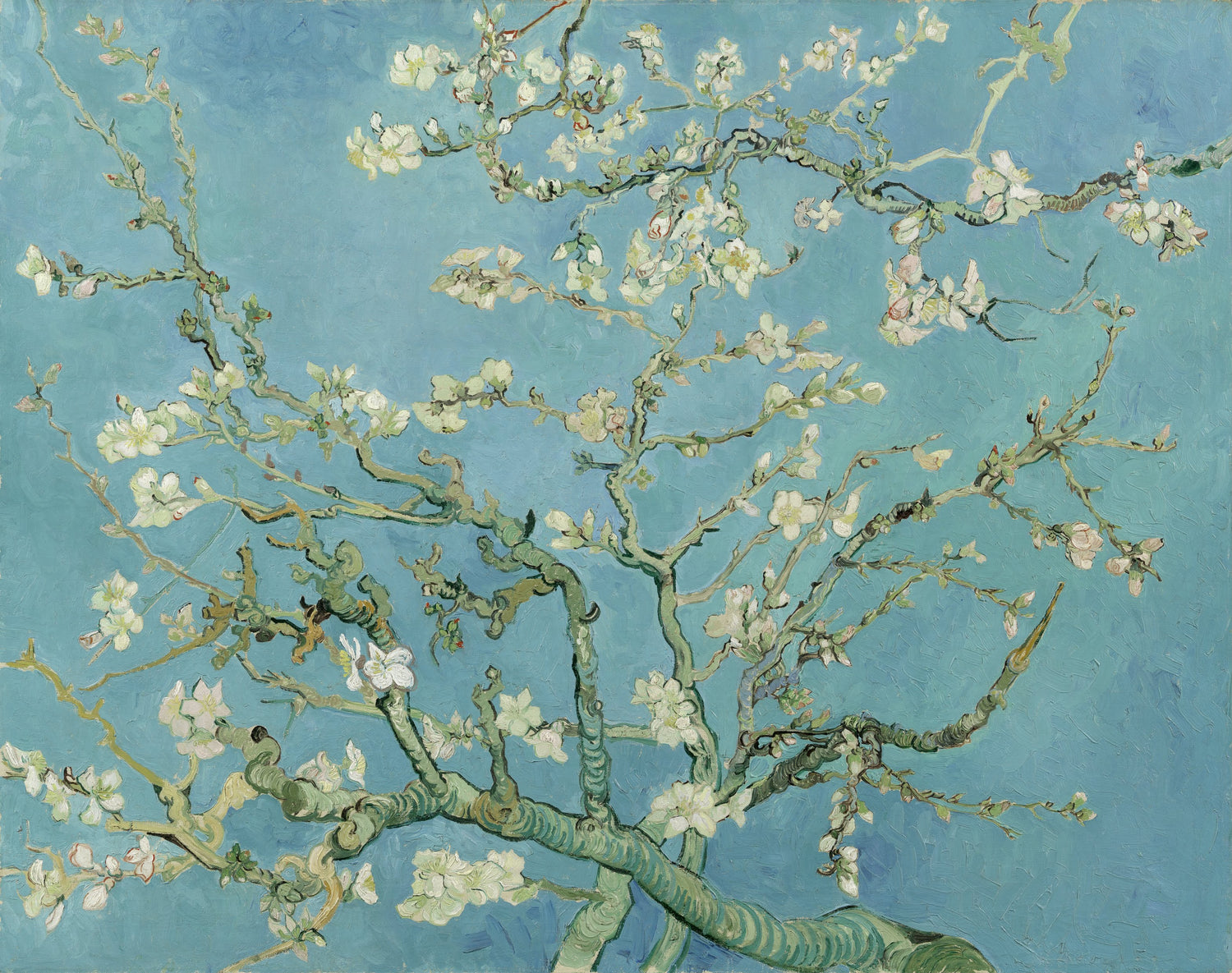
The influence of the Japanese art that Van Gogh studied is fully apparent in Almond blossom. While visiting Saint-Rémy de Provence, the painter produced this oil on canvas measuring 73.5 x 92 cm in February 1890. He wanted to celebrate the birth of his godson, the son of his brother Theo. The almond tree is an emblematic tree of nature that reappears in spring. In his own way, Van Gogh may have expressed his modern conception of the nativity here. In any case, the freshness of this painting contrasts with the darker themes that inspired the artist at this time of his life.
Date of the work : 1890
Original dimensions : 74 cm x 92 cm
Place of conservation : Musée Van Gogh, Amsterdam, Netherlands
Wheatfield with Crows
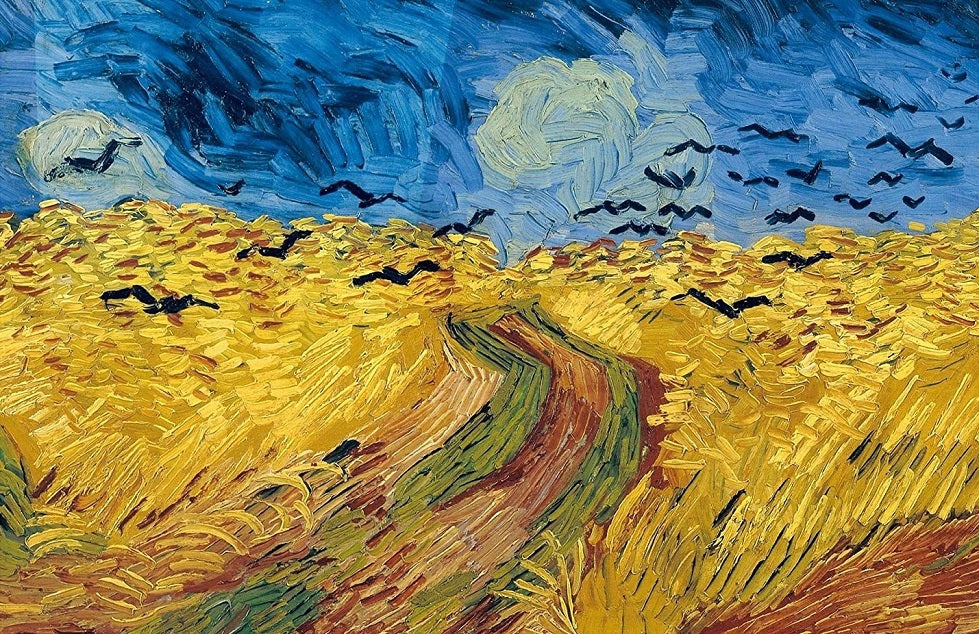
At the end of his life, Van Gogh moved to Auvers-sur-Oise, where he rented a small room at the Ravoux Inn. Through his brother Theo, he met Dr. Paul Gachet, a friend of the painters Cézanne and Pissarro, who took care of him. Shortly before, he had been committed to a mental institution in Saint-Rémy de Provence. But his old existential demons had not left him and were expressed more than ever in his works. Vincent Van Gogh painted Wheatfield with Crows in July 1890, a few days before his death. The work depicts a rural landscape in which the tawny, ochre colours of a field criss-crossed by dirt paths and grass contrast with the dark blue of a stormy sky at dusk. The scene perhaps foreshadows the torments to which the artist is prey, and the very schematic representation of the crows seems to conceal the message of a fatal premonition.
Date of the work : 1890
Original dimensions : 50,5 × 100,5 cm
Place of conservation : Musée Van Gogh, Amsterdam, Netherlands
The starry night
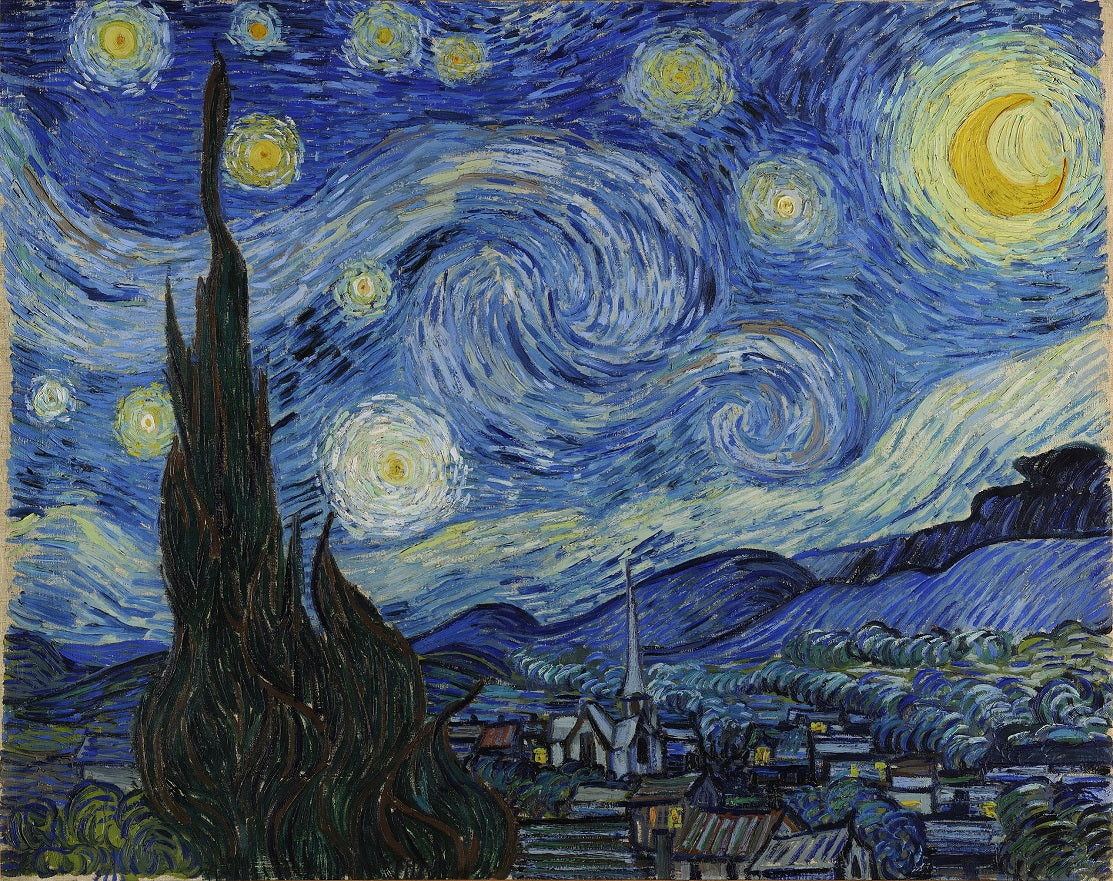
The Starry Night is an oil on canvas dating from June 1889. In this work, Van Gogh depicts a nocturnal spectacle in which swirls of stars mingle with a halo of moonlight. The celestial star shines like a sun, giving the whole picture a magical atmosphere. But this poetic setting may conceal a completely different reality. The main elements of this painting, interspersed with shades of blue and yellow, are organised around a spiral that gives the sky a chaotic force. Perhaps this representation reflects the unstable character of the artist, who was torn between bouts of dementia and creative euphoria.
Date of the work : 1889
Original dimensions : 74 cm x 92 cm
Place of conservation : Museum of Modern Art (MoMA), New York, USA
Starry Night Over the Rhône
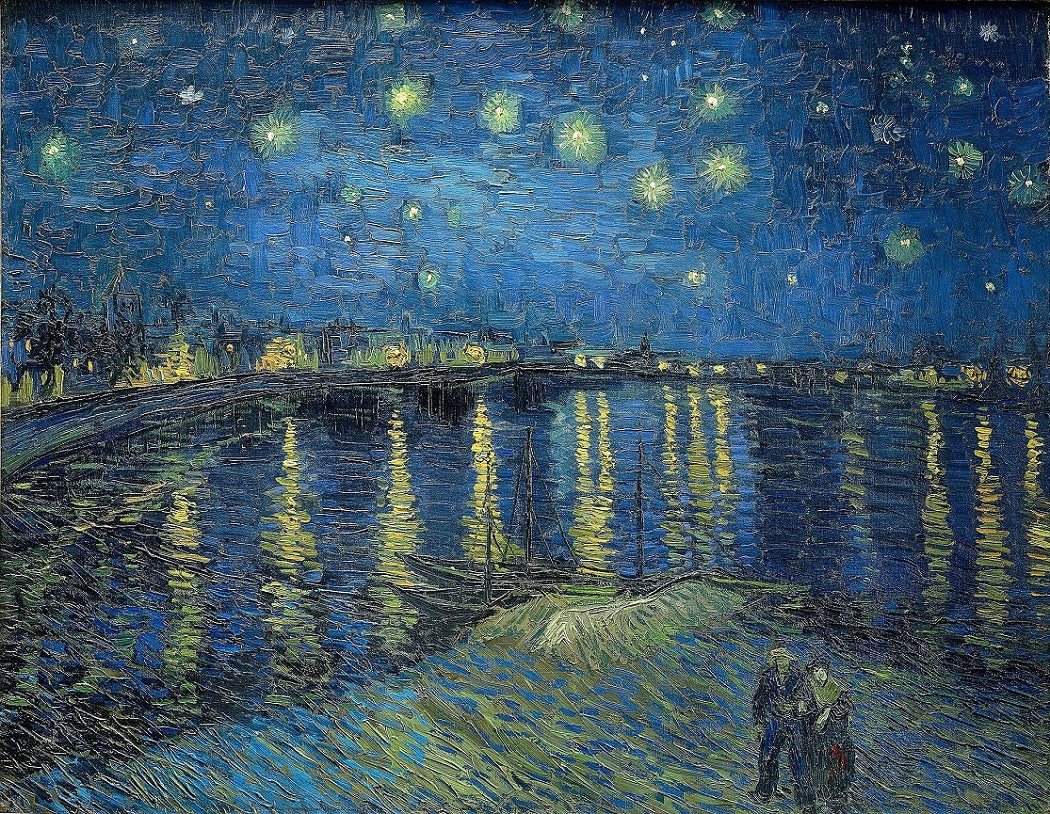
Van Gogh often expressed his passion for night skies. In his view, the night is just as alive as the day. And the painter made this premise one of his most cherished themes. Painting at night was an obsession for him. Painted in September 1888 in Arles, The Starry Night over the Rhone is the first in a long series of paintings that Van Gogh would devote to the night sky. In this painting, the lights burst forth from all sides, and the lights of the city of Arles, reflected in the Rhône, seem to respond to the stars shining in the sky. In the foreground, a couple is strolling along, which gives the painting a dilettante and peaceful rhythm.
Date of the work : 1888
Original dimensions : 72 cm x 92 cm
Place of conservation : Musée d'Orsay, Paris, France
Vase with Twelve Sunflowers
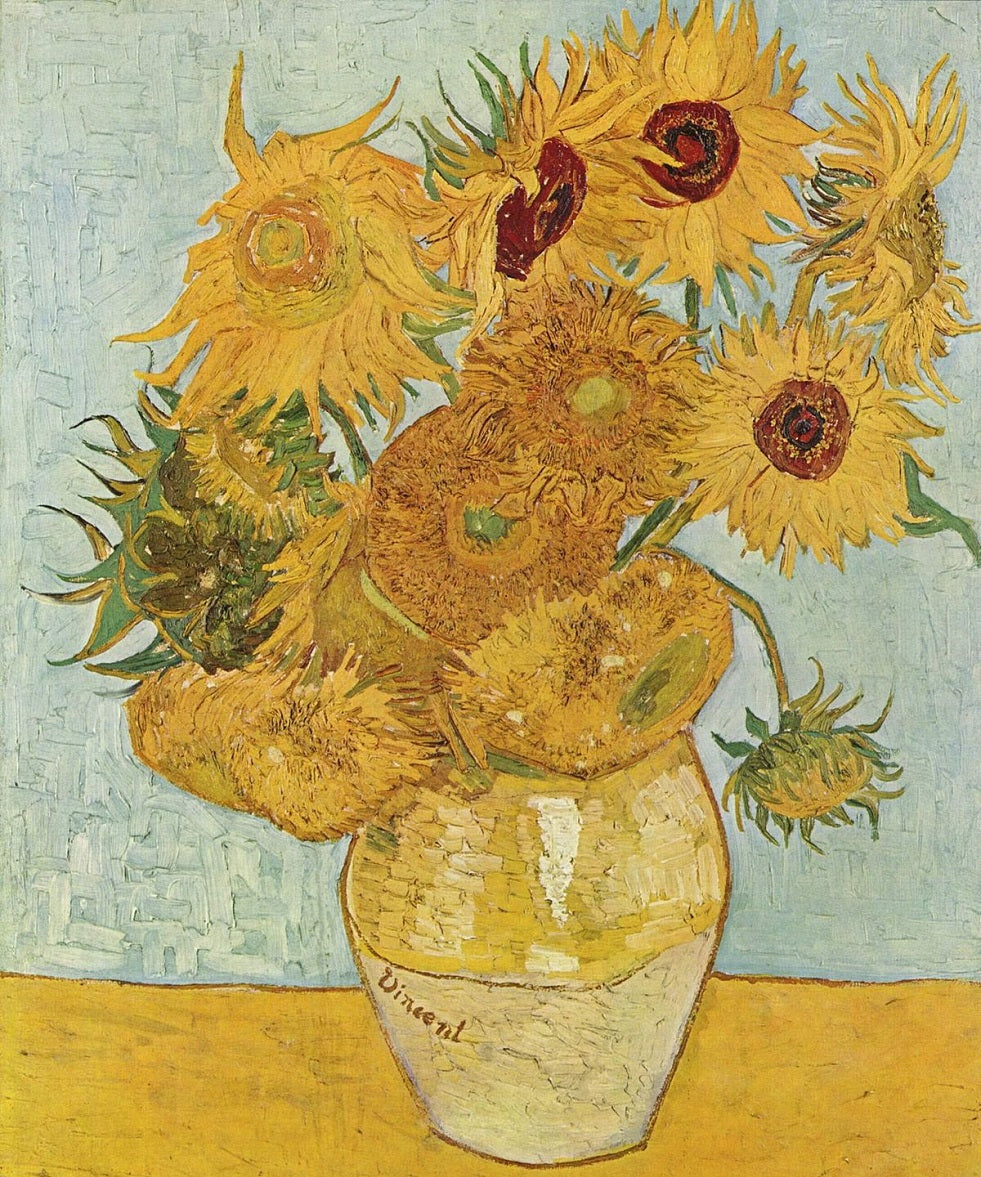
The "Sunflowers" series of still lifes is probably Van Gogh's best known. Between August 1888 and January 1889, the artist painted seven pictures in which these heliotropic flowers are depicted in different phases of their life, from their blossoming to their wilting. Two similar paintings, one of which opens the series and the other closes it, are entitled "Vase with Twelve Sunflowers". The flowers are arranged in a terracotta vase that stands out against a light blue background that brings out the subject with an almost photographic foreground effect. The colours, all in shades of ochre and yellow, give relief to the canvas and an impression of life to the flowers which, represented at different stages of their flowering, perhaps symbolise the cycle of life.
Date of the work : 1889
Original dimensions : 95 × 73 cm
Place of conservation : Philadelphia Museum of Art, Philadephia, USA
The potato eaters
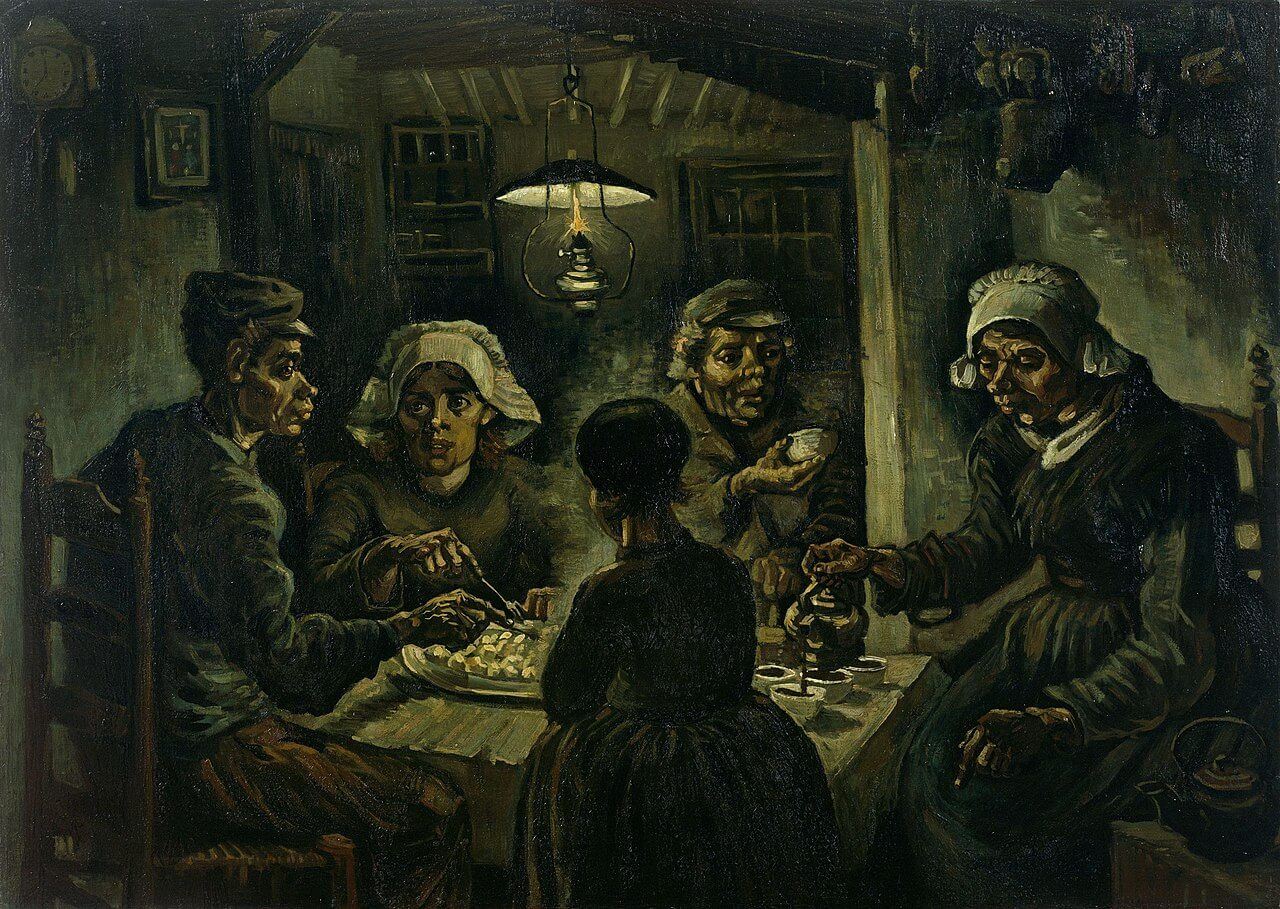
Vincent van Gogh's painting The Potato Eaters is an iconic work that captures the everyday life and simplicity of 19th-century Dutch peasants. Painted in 1885, this canvas depicts an intimate scene of a family gathered around a table, sharing a frugal meal of potatoes. Using a palette of dark, earthy colours, Van Gogh succeeds in conveying the heaviness and rusticity of peasant life. The faces of the figures, lit by the dim light of an oil lamp, reflect fatigue, but also a certain serenity and deep humanity.
The artist chose to depict this simple but profoundly human moment to show the solidarity and strength of the people in the face of adversity. The rough textures, calloused hands and worn clothing of the figures bear witness to the harshness of their daily lives. Yet despite this austere reality, Van Gogh manages to infuse the scene with a palpable warmth and dignity.
Date of the work : 1885
Original dimensions: 114 × 82 cm
Place of conservation : Van Gogh Museum, Amsterdam, Netherlands



